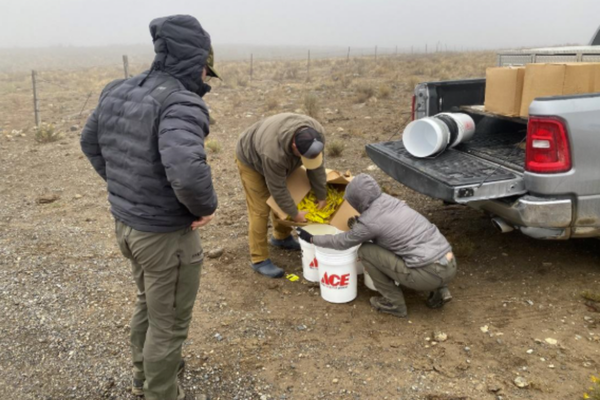Conservation Commons: Ecosystem Engineers and Their Human Allies
The engineering prowess of beavers has long been known by humans, sometimes respected, often despised. Once widespread across North America, beavers were removed from much of their range between the late 1700s and early 1900s through market trapping and habitat loss. In Idaho in 1948 it was decided to relocate problem beavers to a remote area of the Frank Church Wilderness by dropping them out of planes in boxes with parachutes attached. We’ve come a long way since those days, but the tenacity of beavers remains steady and problems continue to arise regarding how to manage and coexist with these animals.
On a national level, it is quickly becoming clear that beaver management plans and restoration of this species to public land headwaters and other historic habitat is of mounting importance. The National Wildlife Federation unanimously passed a resolution to focus on beaver restoration as an important strategy to combat the increasing aridity of the western U.S. More and more, people are realizing the irreplaceable role that beavers play in ecosystems across the landscape.
On a sunny Thursday in October, the Idaho Wildlife Federation joined a collaborative group working on a stretch of Josephine Creek deep in the Owyhees of southwestern Idaho to improve habitat through pilot projects of a new method constructing BDAs, or Beaver Dam Analogs, within impaired stream systems that have the potential for beaver translocation. Biologists, scientists, land managers, ranchers and other stakeholders have joined together on both public and private property to complete these projects and watch as nature takes it from there. Relationships built between agency workers, private landowners and other stakeholders ensures that whatever the outcome, a common goal will continue to unite people and move this work forward.
So, what exactly is a BDA? Standing for Beaver Dam Analog, this form of low-tech restoration involves building beaver dam mimicry structures from untreated wood posts and an assortment of natural features such as willow poles, root wads, branches and mud. Intended to replicate a beaver dam, the final product built by humans gets much of the work out of the way in the hopes that beavers will naturally recolonize that stretch of stream. Once there, they can simply continue building off the work already completed by humans. It is a passive approach to restoration that allows for the majority of the work to be done sans humans. It’s a nudge in the right direction for the beavers.
Once BDAs have been put in place, what next?
Project stakeholders survey Josephine Creek for potential BDA sites.
Sites will be monitored, and waiting is now the name of the game. In areas where similar projects have been ongoing for multiple years, results have been very positive. Once beavers recolonize, habitat has been shown to improve extensively within just two years of project implementation. Groundwater recharge, green zones expansion and more variable water temperatures are just a few results that have been seen already. Under a successful project, riparian and wetland habitat have also grown, benefitting both the wildlife and cattle producers.
Over the course of the next six hours the group of us built three BDAs and aided in streambank stabilization by adding logged juniper from the nearby hills and willow plugs, sections of willow branch placed in the ground to take root, to particularly eroded sections of the creek. As one of the pilot projects for this group of stakeholders, there is much anticipation as to how these efforts will pan out in the upcoming year. “Beavers are going to be the key component. We can’t match their dedication to dam building, we can only hope to give the, a good start”, says Josh White, a wildlife biologist with the US Fish and Wildlife Service.
As we drove away that afternoon, I glanced back towards the valley. Cattle moved slowly through the sagebrush hills and up high a mosaic of habitat was visible which looked prime for elk. My mind wandered to 12 months down the road, picturing what this dry valley could look like then. Wildlife does not know property boundaries, and the collaborative conservation work between private landowners, public land managers, scientists and other stakeholders just may be what is needed to continue to move the needle forward for the benefit of all.
Thanks to Josh White with the US Fish and Wildlife Service for coordinating the trip. BDA project collaborators include Idaho Department of Fish & Game, Office of Species Conservation, Sage-grouse Initiative, Trout Unlimited, Owyhee Watershed Council, Wood River Land Trust, Bureau of Land Management, Anabranch Solutions, The Nature Conservancy, Idaho Department of Lands, and Private Landowners.





